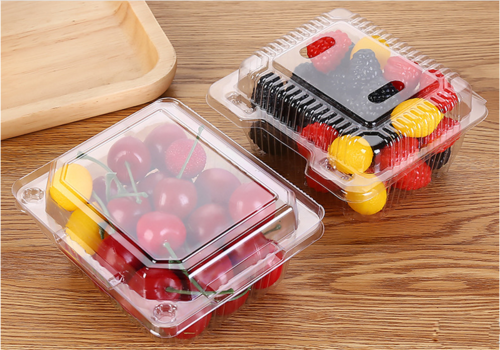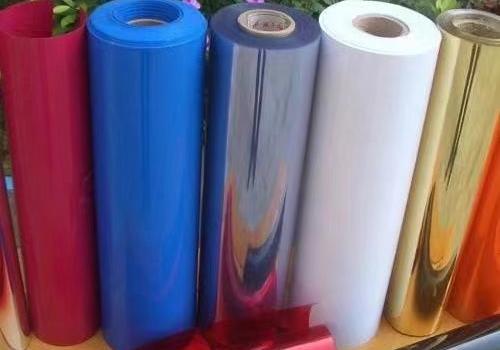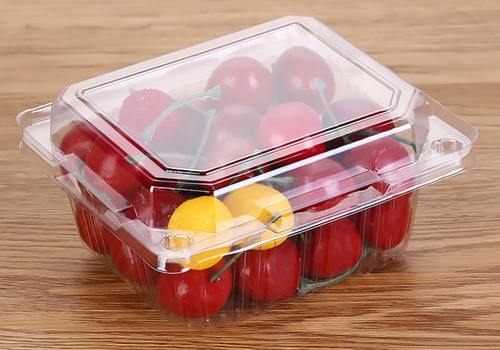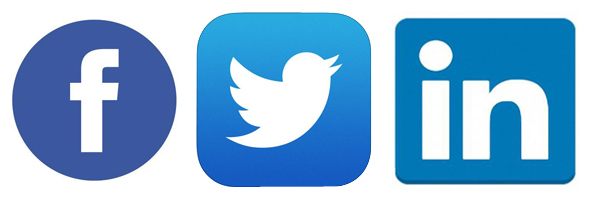
1. Blister: A plastic processing technology. The main principle is to heat and soften a flat plastic hard sheet or plate (thick plastic sheet), then use a vacuum to absorb it on the mold surface, cool it, and form it. It is widely used in plastic packaging. , Lighting, advertising, decorative vehicle and ship accessories, household appliances liner (such as refrigerator liner), door panels, lighting, luggage, decorative parts, slides, furniture, sanitary ware, lamps, toys, teaching equipment, art advertising, transportation Signs, pallet liners and other industries. Commonly used materials are: ABS. PP. PS. PVC. EPS. HIPS. PE. HDPE. PC. PMMA and other thermoplastics.2. Blister packaging: the general term for using plastic blister technology to produce plastic products and encapsulating the products with corresponding equipment. Blister packaging products mainly include: blister, tray, blister box, synonyms are: vacuum cover, blister, etc. Blister packaging 3. The equipment mainly includes: blister forming machine (automatic blister forming machine, thick sheet blister forming machine), punch, sealing machine, high frequency machine, folding machine. Packaging products formed by packaging can be divided into: plug-in cards, blister cards, double blister, half blister, double-fold blister, tri-fold blister, etc.4. Blister: The transparent plastic hard piece is made into a transparent plastic with a specific convex shape by using a blister process, and it is covered on the surface of the product to protect and beautify the product. Also known as blister, vacuum hood, plastic mask. According to the different forms of the blister, it can be divided into: single blister, double blister, card blister and blister card blister4. Blister box: It is a kind of blister product with lid and bottom. The bottom and lid are connected together called half-fold blister box, and the bottom and lid separated are called sky-bottom blister box.5. Blister tray: also called plastic inner tray, the plastic hard piece is made into plastic with a specific groove by the blister process, and the product is placed in the groove to protect and beautify the product.6. Flocking inner support: It is a kind of blister tray made of special materials, and a layer of flocking material is glued to the surface of ordinary plastic hard sheets, so that the surface of the tray has a flocking feel, which is used to improve the quality of packaging. .7. Antistatic tray: It is a blister tray made of special materials. The surface resistance of this material is less than 10 to the 11th power ohm. Mainly used for blister trays of electronic and IT products.8. Blister mold: The most expensive mold is the plaster mold, followed by the electroplated copper mold, and the most expensive mold is the aluminum mold. The mold is drilled with small holes, which are used for vacuum absorption of the heated hard piece to form a blister product.9. Blister molding: It is the blister that we often talk about. A blister molding machine is used to adsorb the heated and softened plastic hard sheet on the surface of the mold, and after cooling, it will form a concave-convex shape of the plastic.10. Blister cutting: After blister molding, the plastic products are cut into individual products by punching the large sheets with a knife. Also called blanking, cutting, die cutting, etc.11. Folding: One of the blister packaging products is called card packaging. The three sides of the blister need to be folded to the back with a folding machine, so that in the next packaging process, the paper card is inserted into the folding to form an insert. Card packaging.12. Pull line: some undesirable line protrusions (not on the mold) produced during the production of blister molding need to be re-modified (reduce the height and increase the roundness) and add additional pressure molds (we call them upper Mode) to solve. When the cable is too large, it is regarded as a defective product and cannot be used for high-end blister packaging. However, in the field of parts turnover trays, as long as the cable is arranged neatly and does not affect the use function, it should be regarded as a qualified product. Pull string is also called: Laqiu, cramps and so on.13. Scratches: There are scratch marks on the blister products, especially on the transparent blister. If the marks are too long or too large, the blister will become a defective product and cannot be used for high-end packaging.14. Crystal point: In the production process of blister sheet, due to the fine dust in the air, falling on the heated plastic material, a kind of transparent defect is produced, especially in the production process of transparent blister sheet. If the defects are too large, they are regarded as defective products.15. Air bubbles: In the production process of blister sheet, the heated plastic material contains air, so that the finished sheet produced contains air bubbles, especially in the production process of transparent blister sheet. If it is too large, it is regarded as defective.16. Water ripples: In the production process of blister sheet, due to different materials and processing techniques, the surface of the finished sheet produced has water ripples, especially in the production process of transparent blister sheet, this kind of water ripples If it is too large or too much, it is regarded as defective. In general, the thicker the sheet, the more obvious the water ripples. Qualified PET materials rarely have water ripples, but most PVCs have water ripples.17. Heat sealing: It is a kind of blister packaging process. The paper card coated with blister oil on the surface and the blister are heat-sealed with a sealing machine to form a blister card package.18. High-frequency sealing: It is a blister packaging process that uses a high-frequency machine to generate high frequency to bond the blister and the blister together to form a double blister package.19. Ultrasonic sealing: It is a blister packaging process that uses an ultrasonic machine to generate ultrasonic waves to bond the blister and the blister together to form a double blister package. The difference from high-frequency sealing is that ultrasonic waves can not only seal PVC , PETG material, PET material can also be sealed, and there is no electromagnetic damage to the packaged product, especially suitable for the packaging of electronic products; Side.
Application of PET in various industries PET plastic is the abbreviation of English Polyethylene terephthalate, referred to as PET or PETP. Chinese means: polyterephthalate plastics, mainly including polyethylene terephthalate PET and polybutylene terephthalate PBT. Polyethylene terephthalate is also commonly known as polyester resin, commonly known as polyester resin. PET plastic structure PET plastic has a highly symmetrical molecular structure and a certain crystal orientation ability, so it has high film-forming properties and properties. PET plastic has good optical properties and weather resistance, and amorphous PET plastic has good optical transparency. In addition, PET plastic has excellent wear resistance, friction, dimensional stability and electrical insulation. Bottles made of PET have high strength, good transparency, non-toxic, anti-permeability, light weight, high production efficiency, etc., so they have been widely used. The molecular chain structure of PBT and PET is similar, and most of the properties are the same, except that the main chain of the molecule has changed from two methylene groups to four, so the molecule is more flexible and the processing performance is better. PET is a milky white or light yellow highly crystalline polymer with a smooth and shiny surface. Creep resistance, fatigue resistance, good friction resistance and dimensional stability, low abrasion and high hardness, with the largest toughness among thermoplastics; good electrical insulation performance, less affected by temperature, but poor corona resistance. It is non-toxic, weather-resistant, chemical-resistant, low water absorption, resistant to weak acids and organic solvents, but not immersed in hot water or alkali. PET resin has high glass transition temperature, slow crystallization speed, long molding cycle, long molding cycle, large molding shrinkage, poor dimensional stability, brittleness of crystallization molding, low heat resistance, etc. Through the improvement of nucleating agent, crystallization agent and glass fiber reinforcement, PET has the following characteristics in addition to the properties of PBT: 1. Heat distortion temperature and long-term use temperature are the *highest among thermoplastic general engineering plastics; 2. Because of its high heat resistance, the reinforced PET is immersed in a solder bath at 250°C for 10 seconds, and it hardly deforms or discolors. It is especially suitable for the preparation of soldered electronic and electrical parts; 3. The bending strength is 200MPa, the elastic modulus is 4000MPa, the creep and fatigue resistance is also very good, the surface hardness is high, and the mechanical properties are similar to those of thermosetting plastics; 4. Since the ethylene glycol used in the production of PET is almost half the price of the butylene glycol used in the production of PBT, the price of PET resin and reinforced PET is the lowest among engineering plastics, and has a very high cost performance.Edit this paragraph of the development history of PET plastics In 1946, the United Kingdom published the first preparation of PET. In 1949, British ICI Company completed the pilot test, but after the United States DuPont purchased the ******, the production facility was established in 1953, the first in the world to realize industrialized production. In the early days, almost all PET was used for synthetic fibers, commonly known as polyester in our country, which is indeed good. Since the 1980s, PET has made breakthroughs as engineering plastics, and nucleating agents and crystallization accelerators have been successively developed. At present, PET and PBT together as thermoplastic polyesters have become one of the five major engineering plastics. my country's PET production scale lags far behind several major foreign manufacturers. In the 1980s, my country gradually introduced advanced PET resin synthesis equipment from 10,000 tons to hundreds of thousands of tons from abroad, and the quality and output have made considerable progress. According to statistics from the China Textile Institute, in 1997, my country produced 1.74 million tons of PET chip resin, of which the production capacity of high-viscosity packaging chip resin was 224,000 tons, so there are sufficient sources of resin for the production of PET engineering plastics. Since the equipment for preparing various blending and modifying PET plastics is common with other polymer blending and modifying devices, domestic compounding extruders and other manufacturing have also formed a certain scale, so as long as the market is opened up, domestic PET plastics The production will also grow rapidly.Edit the use of PET plastic in this paragraph Glass fiber reinforced PET is suitable for electrical and electronic and automotive industries, and is used in various coil bobbins, transformers, televisions, tape recorder parts and shells, automotive lamp holders, lampshades, incandescent lamp holders, relays, selenium rectifiers, etc. The current consumption ratio of PET engineering plastics in several application fields is: electrical and electronic 26%, automobiles 22%, machinery 19%, appliances 10%, consumer goods 10%, and others 13%. At present, the total consumption of PET engineering plastics is not large, accounting for only 1.6% of the total PET. 1. Film and sheet materials: all kinds of food, medicine, non-toxic and sterile packaging materials; high-end packaging materials for textiles, precision instruments, electrical components; audio tapes, video tapes, movie films, computer floppy disks, metal coatings and photosensitive films Such as substrates; electrical insulating materials, capacitor films, flexible printed circuit boards and membrane switches and other electronic and mechanical fields. 2. Application of packaging bottles: Its application has been developed from carbonated beverages at the beginning to the present beer bottles, edible oil bottles, condiment bottles, medicine bottles, cosmetic bottles, etc. 3. Electronic appliances: manufacturing connectors, coil bobbins, integrated circuit shells, capacitor shells, transformer shells, TV accessories, tuners, switches, timer shells, automatic fuses, motor brackets, relays, etc. 4. Auto parts: such as switchboard covers, ignition coils, various valves, exhaust parts, distributor covers, measuring instrument covers, small motor covers, etc. The excellent paintability, surface gloss and rigidity of PET can also be used. Manufacture of exterior parts for automobiles. 5. Mechanical equipment: manufacturing gears, cams, pump housings, pulleys, motor frames and clock parts, and can also be used as microwave oven bakeware, various ceilings, outdoor billboards and models, etc. . 6. The molding process of PET plastic can be injection molding, extrusion, blow molding, coating, bonding, machining, electroplating, electroplating, vacuum metal plating, and printing.
Blister trays have many advantages, among which the main advantages are stability, maintenance, beautification and non-corruption. These are the advantages of using blister tray products. There is a kind of pallet with upper and lower lid that has strong maintenance ability. The lower lid can fix the items and the upper lid increases the double-sided interlayer of the items. The packaging style. The more special maintenance products in the pallet are called anti-static blister trays. This kind of packaging is also the one that is used more in the pallet, and the purpose of use is to block the touch of static electricity and the protection of electricity when the goods are in stock. Packed items can be beautified. Blister tray products can not only load items but also beautify items. The appearance of items is the characteristic of packaging. Plastic products are all very packed. As long as they are not deliberately damaged, some blister trays can be used as a revolving tray and can be recycled and reused, which also saves the cost of packaging. The advantage of using blister trays is that this kind of packaging has a wide range of use and is also a product with a large amount of use in the industry market. Most of the items used in packaging are mainly for the sale of items, and the blister tray has a strong carrying capacity. The production interest is low, and the packaging used --- can --- bring effective sales for the goods. Another advantage of packaging is that it can add speciality. Ordinary packaging will only make consumers feel boring. Corn biodegradable lunch boxes, and innovative packaging is the article --- the improvement point, the special choice of the article blister tray Products---the way.Tips on the use of plastic support productsEvery plastic vessel has a number at the bottom (it is a triangle with an arrow, and there is a number in the triangle).If the number is 05 or above, it can be recycled. And the larger the number, the safer it is.If it is less than 05, that is, 04 or below, or even without a number, please do not reuse or heat it, because it will release toxic chemicals and will ---."No. 1" pet: mineral water bottles, carbonated beverage bottles, plastic trays.Do not recycle the beverage bottles to fill hot water. Use: heat-resistant to 70°C, only suitable for warm or frozen drinks, high-temperature liquids, or deformed when heated, degradable lunch boxes, and harmful substances to the human body will be melted out. In addition, scientists discovered that after 10 months of use for No. 1 plastic, it may release dehp, which is toxic to ---. Therefore, throw away the beverage bottles when they are used up, and do not use them as drinking glasses or as storage containers for other items, so as not to cause health problems.With the development of the plastic blister industry, blister application fields are becoming wider and wider. Heat-resistant and degradable lunch boxes, from the blister automotive industry: automotive interior parts, motorcycle decorative panels, electric scooter shells, and automobile hoods. , Logistics turnover trays, tool cart shells, to food and home appliance industries blister: blister food trays (egg trays, fast food boxes, cup lids, food preservation trays, etc.), degradable lunch box factories, cosmetics and other blister packaging, Refrigerator liner blister, bathtub, electronic tray, door panel, lamps, etc. It can be said that plastic blister products are everywhere in our lives.












